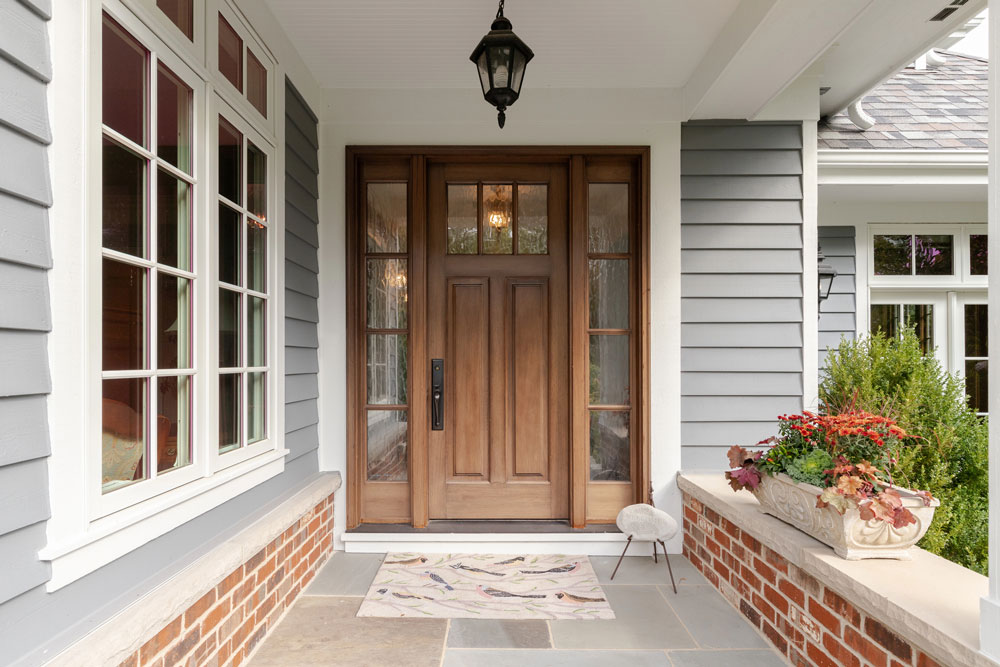A well-installed exterior door not only enhances your home’s appearance but also boosts security and energy efficiency. Whether you’re replacing an old door or upgrading to a new design, the process of exterior door installation requires precision and care. With a few straightforward steps, homeowners can confidently tackle this installation project, achieving quality results without the need for advanced skills. While a DIY approach can be rewarding, a professionally installed door guarantees maximum performance, longevity, and peace of mind. Explore our range of high-quality exterior doors, and let our experienced team assist you with a flawless installation that fits your home perfectly.
Measure the Door Opening for Proper Fitment
Before beginning the installation, it is important to measure the door opening accurately. Ensure the width, height, and depth of the rough opening are checked to match the size of the new door and frame. Taking careful measurements allows you to avoid costly mistakes, ensuring that the door fits perfectly in place without any unnecessary gaps or issues with alignment.
Remove the Old Door and Frame Carefully
When removing the old door and frame, it’s important to proceed cautiously to avoid damaging the surrounding structure. Start by unscrewing or loosening the hinges while supporting the door’s weight to prevent it from falling suddenly. Once the door is removed, carefully pry the frame away from the wall using a pry bar, being mindful of nearby drywall or siding to prevent cracks or chips. Removing the old frame slowly ensures the rough opening remains intact, reducing the need for repairs before installing the new door.
Check and Adjust Rough Opening for Correct Size
Inspecting the rough opening is critical to ensuring the new door fits properly. Begin by checking all sides with a framing square and level to confirm the opening is square and free of any warps. If the opening is too narrow or uneven, you may need to add or remove framing to correct the size. Use shims to fill small gaps or adjust the alignment as necessary. A level, properly-sized opening ensures the new door will sit flush, avoiding future problems such as drafts, moisture leaks, or difficulty closing the door.
If the rough opening is too large or small, adjustments must be made to avoid complications during installation. Adding framing or removing excess material ensures the new door frame will fit snugly without leaving gaps. This preparation step is crucial in creating a stable base for the door and avoiding costly repairs caused by poor installation or misalignment.
Install the New Door Frame with Level Precision
Installing the new door frame into the prepared rough opening requires careful attention to alignment. Begin by placing the frame into the opening and using a carpenter’s level to ensure it is plumb and even on all sides. Double-check both the vertical and horizontal alignment of the frame, making adjustments as needed to prevent the door from sticking or sagging. Level precision during installation not only ensures the door will operate smoothly, but also provides a solid seal that prevents drafts and moisture from entering the home.
Apply Weatherproofing Tape to Prevent Moisture Damage
Weatherproofing tape is essential for protecting the door frame from moisture damage over time. Apply the tape around the exterior edges of the door opening before placing the door. This step creates a waterproof barrier that prevents water from seeping into the walls, which can lead to structural damage and mold growth. Make sure the tape is applied smoothly, with no wrinkles or gaps.
Moisture can easily infiltrate a home through improperly sealed doors, leading to long-term issues with mold and decay. Sealing the door frame with weatherproofing tape creates a first line of defence against these problems. By taking this extra step during installation, you protect your home from costly future repairs.
Use Shims to Ensure Door is Properly Aligned
Shims play a key role in ensuring that the door frame is correctly aligned within the rough opening. They are typically thin, wedge-shaped pieces of wood or composite material that can be inserted between the door frame and the studs to adjust the position of the frame. Place the shims at hinge points and the latch area, ensuring they’re evenly distributed on both sides of the frame. Adjust the shims to maintain an even gap between the door and the frame, allowing for smooth operation and preventing the door from rubbing or sticking. Proper shimming also helps ensure that the door closes tightly against the weatherstripping, improving both security and energy efficiency by reducing drafts and potential water leaks.
Secure the Door Frame with Screws or Nails
After confirming the frame is properly aligned with the shims, it’s time to secure it firmly in place. Use long screws or nails, preferably ones designed for framing, and drive them through the door jamb and into the wall studs. It’s important to space the fasteners evenly, securing them in at least three points along each side of the frame—at the top, middle, and bottom. Be cautious not to overtighten the screws, as this could pull the frame out of alignment or cause it to bow, which may interfere with the door’s movement.
The frame should also be reinforced at the corners, where additional screws or nails will prevent any shifting or loosening over time. A well-fastened frame not only ensures the door will function smoothly but also supports the overall durability of the installation, protecting against future settling or movement that could impact the door’s performance.
Install the Exterior Door and Check for Fit
After securing the frame, it’s time to hang the door and ensure it fits properly within the frame. Check the alignment by opening and closing the door, making sure it moves smoothly without resistance. If necessary, make small adjustments to the hinges or frame to achieve a perfect fit.
Once the door is in place, verify that it closes tightly against the weatherstripping and seals properly. This step is important for both security and energy efficiency, preventing drafts and ensuring the door will perform as intended in all weather conditions.
Add Insulation Around the Door Frame for Efficiency
Insulating around the door frame is a simple yet effective way to improve energy efficiency. Use expanding foam or fiberglass insulation to fill any gaps between the frame and the rough opening. Proper insulation helps to prevent drafts, keeping your home comfortable and reducing energy costs.
Install Exterior Trim to Complete the Door Installation
Once the door is in place, the final step is to install exterior trim around the frame. This not only enhances the appearance of the door but also provides additional protection against the elements. Make sure the trim is flush against the frame and secure it with finishing nails or screws.
Exterior trim helps to complete the look of the installation, giving the door a clean, finished appearance. It also adds an extra layer of protection against moisture, wind, and pests. Take care to ensure the trim is properly aligned and securely fastened to maintain the durability of the installation.
Apply Caulking Around Door to Seal Gaps
Caulking around the exterior edges of the door frame is the final step in sealing the door against the elements. Apply a continuous bead of weatherproof caulk around the frame, smoothing it out with a caulking tool to fill any gaps. Caulking ensures that no moisture can penetrate the frame and cause damage.
Caulking is essential for maintaining the long-term durability of the door and frame. It acts as a barrier against both water and air infiltration, helping to keep your home secure and energy-efficient. Apply the caulk carefully to create a smooth, even seal around the entire frame.
Install Hardware Including Hinges and Locks Securely
With the door in place, install the hinges and locks securely. Attach the hinges to the frame and door using screws, making sure they are properly aligned for smooth operation. Next, install the lockset, ensuring the deadbolt engages smoothly with the strike plate in the frame.
Properly installed hardware ensures the door will function smoothly and provide the necessary level of security. Test the hinges and locks to verify they are operating correctly, and make any necessary adjustments before finishing the installation. Well-installed hardware adds both functionality and safety to the door.
Test Door for Smooth Operation and Proper Alignment
After completing the installation, thoroughly test the door to ensure it opens and closes smoothly. Check for any sticking or misalignment, and make any necessary adjustments to the hinges, frame, or shims. Proper alignment is key to ensuring the door will operate efficiently and last for years without requiring repair or adjustment.
AZ Valley Windows: Premium Window and Door Installers
Rely on AZ Valley Windows for reliable exterior door installation services to ensure your home is both beautiful and secure. Our team of door experts in Arizona guarantees precision and high-quality workmanship for every project. Whether you’re enhancing your home’s security or improving its energy efficiency, we are here to deliver personalized solutions tailored to your needs. With over 50 years of combined experience, AZ Valley Windows is committed to elevating the aesthetics and functionality of your home, ensuring long-lasting satisfaction.


